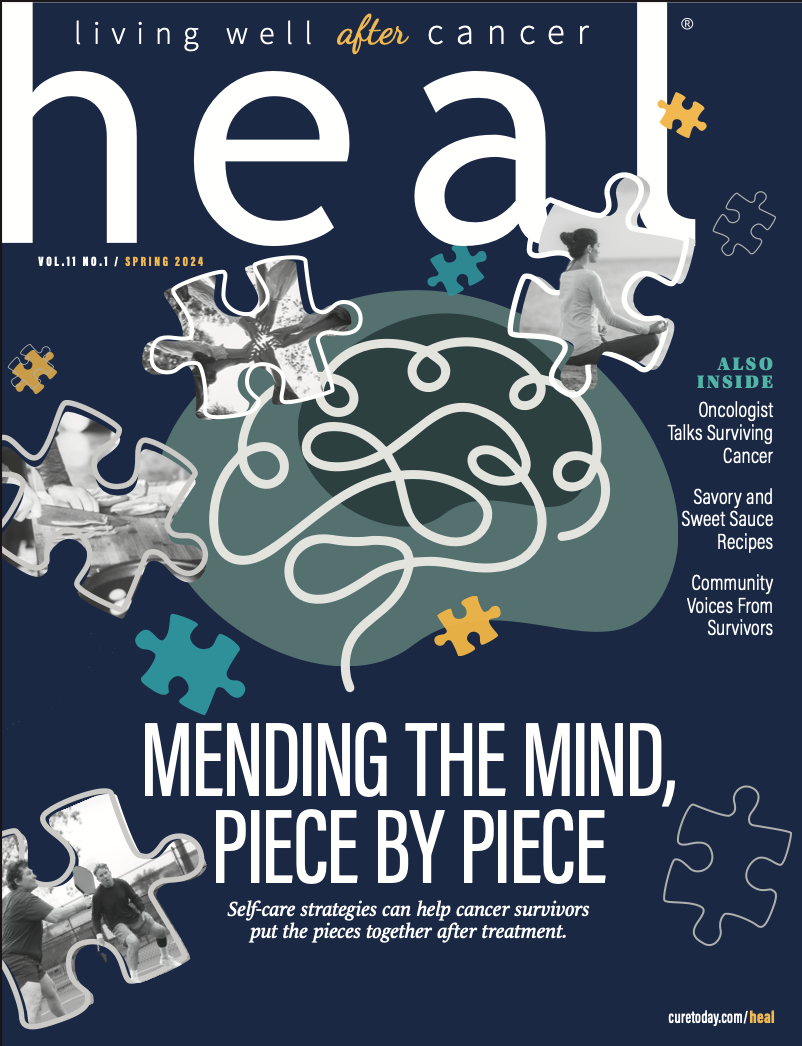News
Article
Heal
Hispanic/Latino Survivors May Be Higher Risk for Cardiometabolic Comorbidities
Author(s):
Key Takeaways
- Hispanic/Latino cancer survivors face higher cardiometabolic comorbidities, affecting health-related quality of life and supportive care needs.
- Socioeconomic status influences healthcare access, complicating management of cardiometabolic conditions in Hispanic/Latino populations.
Sociodemographic factors affect some survivors who may not have easy access to health care or healthy food, reducing their health-related quality of life.
Implementing heart-healthy behaviors plays an important role in managing cardiometabolic health, particularly for survivors who identify as Hispanic or Latino.

Cardiometabolic comorbidities are found to be higher among cancer survivors who identify as Hispanic/Latino, which may also increase the risk of worse health-related quality of life and unmet supportive care, according to a study.
“Cardiometabolic comorbidities are conditions that affect the cardiovascular or metabolic systems,” explained Patricia Moreno, senior author of the study, clinical psychologist and assistant professor in the department of public health sciences at the University of Miami Miller School of Medicine in Florida.
“The ones that you hear [about] very commonly are things like diabetes, hypertension, obesity and peripheral vascular disease [reduced blood circulation],” Moreno added. “It can also include things like myocardial infarction, which is a heart attack, or congestive heart failure or cerebrovascular disease.” The study included 288 survivors who identified as Hispanic/Latino, with an average age of 56. Most were married or cohabitating (61.5%), had a high school education or less (65.6%) and had a household income of less than $50,000 (68.4%).
“Cardiometabolic comorbidities are pretty common, but they’re not as well-studied in certain populations like Hispanic and Latino [populations],” Moreno said, “even though we believe they should be, because in the general Hispanic and Latino [populations], regardless of a history of cancer, we know that they are disproportionately more common.”
Moreno added, “Hispanic and Latino individuals in the United States are more likely to have cardiometabolic conditions. And it just adds a layer of complexity in terms of managing your cancer treatment and then managing your health after cancer treatment. It’s something that you certainly would want to be aware of and managing with your primary care provider as well as with your oncology care team.”
An important finding from the study, Moreno noted, was that the Hispanic/Latino participants tended to have reduced health-related quality of life (HRQOL) and had a higher chance of having unmet supportive care needs. Survivors with cardiometabolic comorbidities also had lower overall emotional and physical well-being, compared with those who had no cardiometabolic comorbidities.
Survivors with cardiometabolic comorbidities also tended to have unmet supportive care needs, which included unmet psychological needs, compared with those without cardiometabolic comorbidities, the study results showed.
READ MORE: Breast Cancer Survivor Eases Anxiety Through a Mind-Body Program
Researchers also found that Hispanic/Latino survivors with an income of $25,000 or less were more likely to have one or more cardiometabolic conditions, compared with the survivors who had an income of more than $25,000.
“We know that socioeconomic status is associated with access to health care, whether or not someone has a primary care provider,” Moreno explained. “With all of these factors, we would expect it to affect how someone [with a cardiometabolic condition] can effectively manage teamwork with their care team. If someone doesn’t have a primary care provider, chances are that their diagnosis of a cardiometabolic condition might be more advanced, or they may not have access to the best management [regarding] medication and lifestyle, modification and heart-healthy behaviors.”
Although implementing heart-healthy behaviors is an important factor in managing cardiometabolic health, Moreno explained that the effort toward these behaviors — such as managing stress, eating nutritious food and exercising — is still needed.
“Our study was interested in looking at heart-healthy behaviors and whether survivors were more likely to increase heart-healthy behaviors after a cancer diagnosis and treatment,” she said. “We found that attempts to manage stress and to eat healthier were relatively common. However, increasing or adopting more of these heart-healthy behaviors after surviving cancer was not more likely to change among those with or without cardiometabolic conditions.”
Specifically, she noted that there was “no difference in their likelihood to try to exercise more, lose weight or abstain from alcohol. And that’s really important because these heart-healthy behaviors can help prevent and also manage these cardiometabolic conditions.”
READ MORE: Physical Activity May Help Reduce Pain in Cancer Survivors
Although heart-healthy behaviors are key to managing cardiometabolic health, Moreno also emphasized that factors such as access to or affording healthy foods may contribute to the disparity.
“There are environmental influences on the ability to adopt these heart-healthy behaviors. Hispanic and Latino [individuals], in general in the United States, are more likely to live below the federal poverty line,” she explained. “They’re more likely to live in neighborhoods that lack recreational facilities or safe outdoor spaces, [where there may] even be food deserts. So we need to think about this ecologically, and hopefully support policies and changes at the community level that might support people in adopting heart-healthy behaviors. It’s not just about one person’s will — it’s about the environment that they live in that can determine their health.”
For more news on cancer updates, research and education, don’t forget to subscribe to CURE®’s newsletters here.





